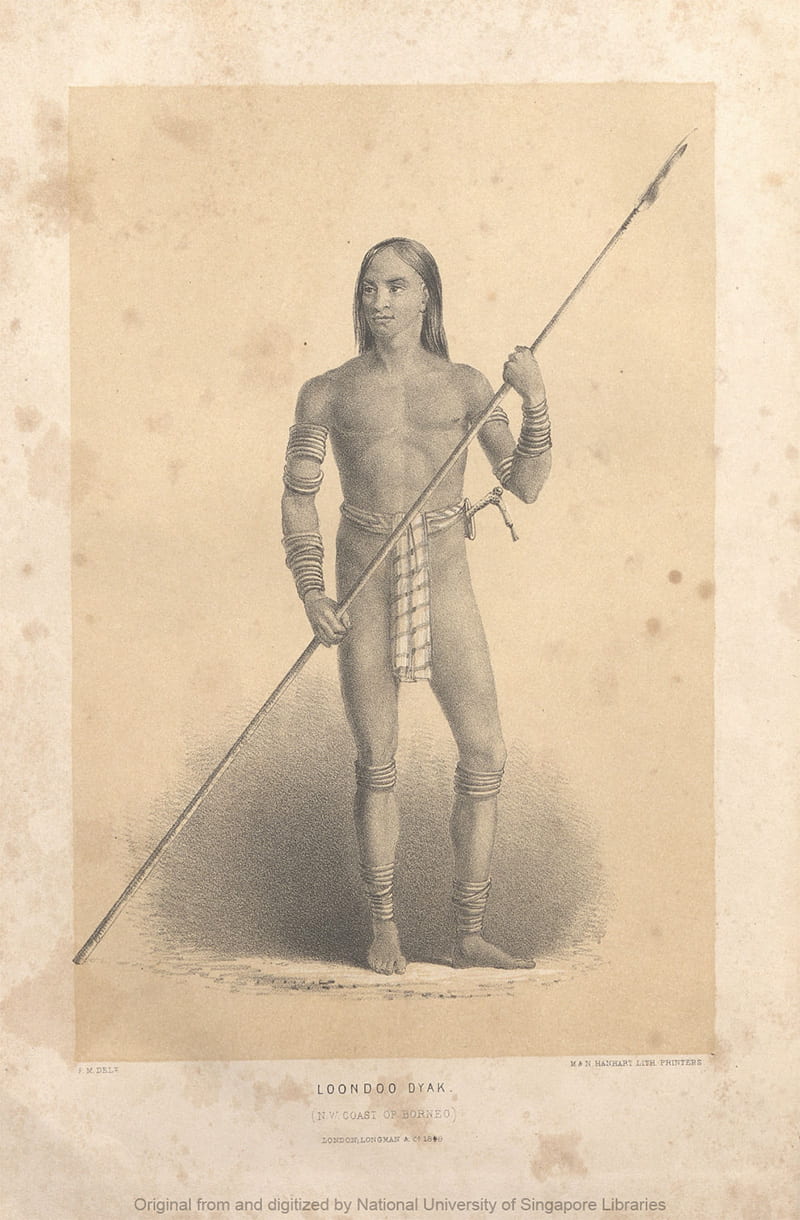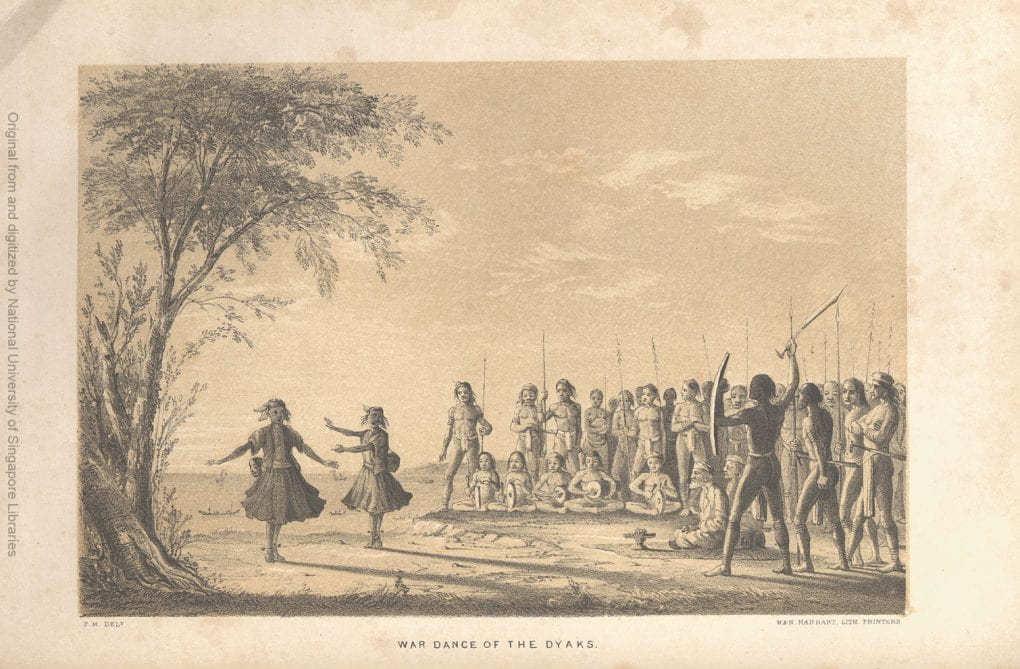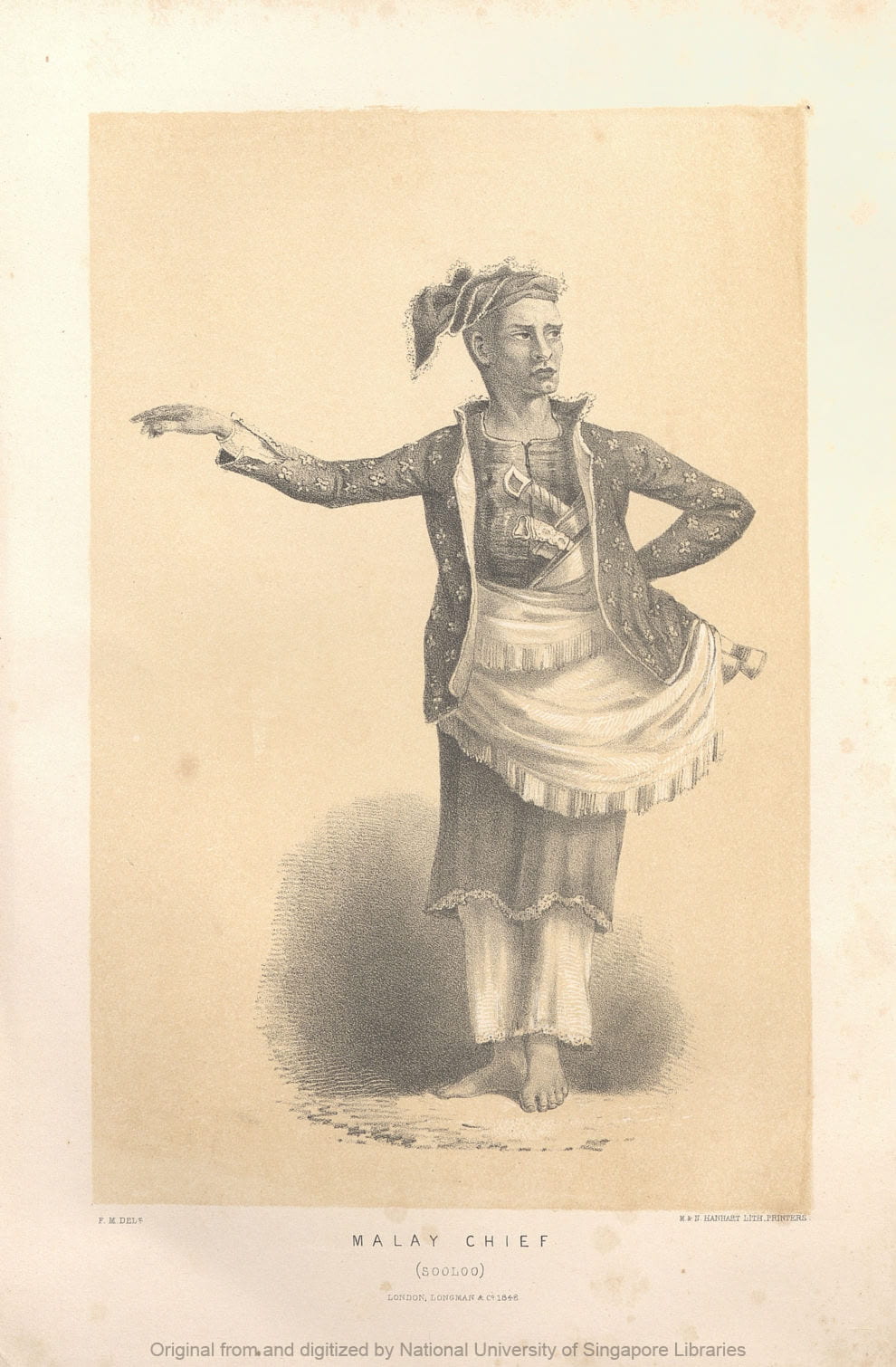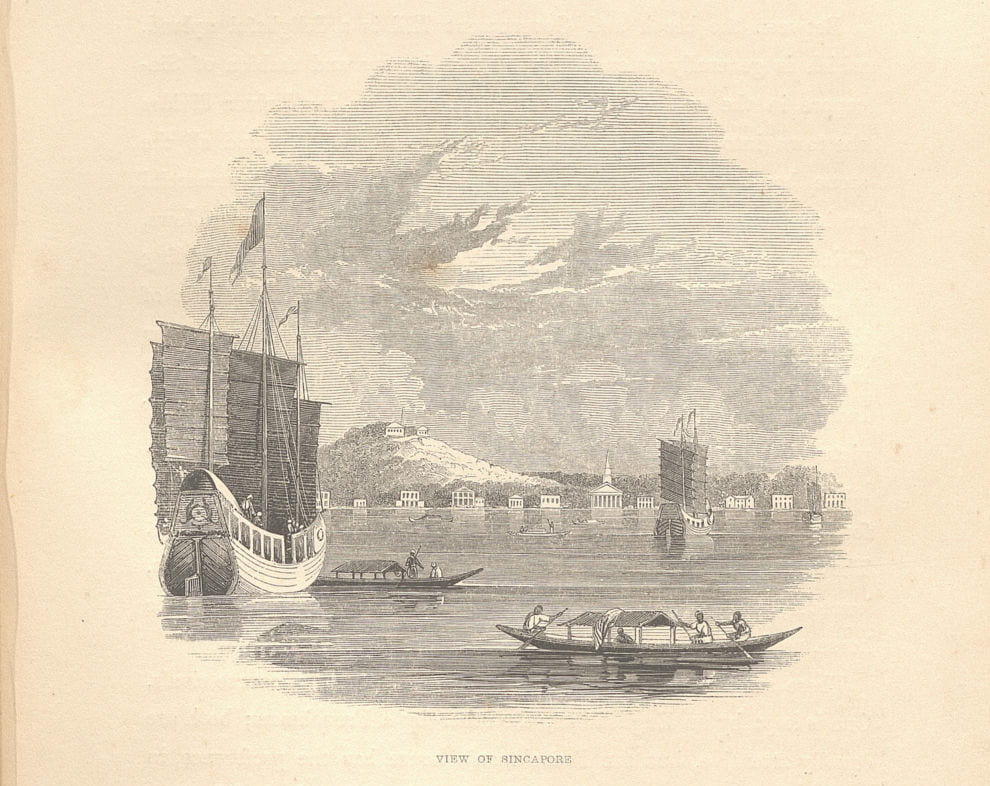By Jolyn Tay
Borneo and the Indian Archipelago: with drawings of costume and scenery is a narrative of the proceedings of Her Majesty’s vessel, H.M.S. Samarang, during her last surveying cruise.
The author, Frank Marryat (1826–1855), who was also the midshipman of H.M.S Samarang, wrote this book about the voyage to the coasts of Sarawak, Indonesia, and Borneo. This book compiled an extensive collection of his drawings and detailed narration of the experiences the crew encountered.
“In describing people and countries hitherto unknown, no description given by the pen will equal one correct drawing,” Marryat reflected. Owing to his “not doing any duty on board at one time”, and at another by him “having been discharged into the hospital-ship at Hong Kong”, Marryat found time to pen detailed sketches of natives, sailing vessels, building architecture, and scenery of the places he visited. The collection of beautiful drawings are indeed powerful testament that pictures speak better than a thousand words.
The journey of the surveying vessel, H.M.S. Samarang, started from Portsmouth Harbour in Spithead on 25th January, 1843. It took 6 months to reach the Christmas Islands, thereafter it sailed to the Sarawak (Kuchin) where the crews first encountered one of the native groups of Borneo – the Dyak people.
The crew had an eye-opening experience with the tribe of cannibals when they visited the Dyak’s Head House. “Head House…as it is termed…the beams were lined with human heads…”. They were treated with local delicacy, entertained with the tribal music and national dances.
As they continued with their Borneo journey, Marryat meticulously described the lifestyles of Dyaks, their villages, customs, costumes and even their war-boat, canoes, hunting equipment and weapons. The crew also witnessed the local religious ceremony and a unique war dance of the Dyaks.
There are various groups of Dyak tribe with their own unique dressing and customs. Marryat was detailed in describing their accessories such as head-dresses, rings of solid tin, brass or copper around their hips and shoulders, their use of tigers’ skins, monkeys’ skins, and feathers of Argus pheasant etc in making clothes and head-dresses.
Readers can also find a good amount of information about the Malay custom and culture during that era, where the robbers would lose their right hand for the first offence and death penalty for repeated offence, for instance. Marryat did a comparative observation of Dyaks versus the Malay in terms of their culture, habits, and ways of life.
Marryat’s drawings were originally “never intended for publication”. As he proceeded, however, he found that “it would be better, and make the work more perfect,” if he published the whole of the cruise. And thankfully he did, for without which, we would miss an interesting read about the colourful history and rich culture of Borneo and the Indian Archipelago.
All book images are taken from the book, Borneo and the Indian Archipelago: with drawings of costume and scenery.






The narrative detailing the proceedings of H.M.S. Samarang during its surveying cruise in Borneo and the Indian Archipelago sounds fascinating. Historical accounts enriched with drawings of costume and scenery offer a unique glimpse into the past.